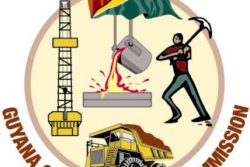 For the first version, I’m going back in time quite a stretch, back to the early 1950s in my youthful years in West Demerara, first at Hague and then at Vreed-en-Hoop. Back then, as now, the West Coast Road as it was called, ran from Parika, on the Essequibo River, to Vreed-en-Hoop on the Demerara, and was the lifeline for all the villages on that stretch hugging the coast. Everything moved on that road, from our champion female cyclist Jean Perry, from de Willem, I think, who used it for training purposes, to the donkey carts bringing goods from the various railway stations and distributing them up and down the road, to the enormous dump trucks, and even the occasional tractor. A singular aspect was that it was essentially a red brick road, made of burnt earth, and so there was copious red dust in the dry seasons (we would have to shut the upstairs windows in the Hague house because of dust) and deal with flooded spots and even holes in rainy times. (In the rainy spells, it was a common sight that set you laughing to see persons on the parapets jumping to avoid being splashed by passing vehicles. Just be sure your mother never saw you laughing.) Of course, apart from Georgetown and New Amsterdam, that red brick road composition was the norm almost everywhere else, and I remember the East Bank Road as probably the worst of the lot. In the rainy season, it was a quagmire, distinct for its two deep parallel ruts caused by various tyres. Vehicles would get stuck in the middle of the track.
For the first version, I’m going back in time quite a stretch, back to the early 1950s in my youthful years in West Demerara, first at Hague and then at Vreed-en-Hoop. Back then, as now, the West Coast Road as it was called, ran from Parika, on the Essequibo River, to Vreed-en-Hoop on the Demerara, and was the lifeline for all the villages on that stretch hugging the coast. Everything moved on that road, from our champion female cyclist Jean Perry, from de Willem, I think, who used it for training purposes, to the donkey carts bringing goods from the various railway stations and distributing them up and down the road, to the enormous dump trucks, and even the occasional tractor. A singular aspect was that it was essentially a red brick road, made of burnt earth, and so there was copious red dust in the dry seasons (we would have to shut the upstairs windows in the Hague house because of dust) and deal with flooded spots and even holes in rainy times. (In the rainy spells, it was a common sight that set you laughing to see persons on the parapets jumping to avoid being splashed by passing vehicles. Just be sure your mother never saw you laughing.) Of course, apart from Georgetown and New Amsterdam, that red brick road composition was the norm almost everywhere else, and I remember the East Bank Road as probably the worst of the lot. In the rainy season, it was a quagmire, distinct for its two deep parallel ruts caused by various tyres. Vehicles would get stuck in the middle of the track.
I’m bringing you forward now to this past week when, transporting an overseas visitor on a trip, as we say, over the river, I was on the West Coast Road again, but this time astonished at the difference in the current version, and the difference is stark. No more red brick or deep ruts. It is now all high-grade asphalt, smooth as glass, not a pothole in sight. As I recall, the only smooth surface on the old red brick road was a stretch of maybe half a mile or so, made up of two parallel concrete strips that ran from the Vreed-en-Hoop stelling area on that piece of straight roadway from the stelling to the first bed at Crane. Cyclists and pedestrians would compete for the use of the strip. I recall my sister, Mell, telling us of walking on the strip and a cyclist coming up behind her proclaiming, “This strip! This strip!” loudly declaring his right-of-way. Now, the strips are gone, and it’s a first-world piece of roadway with (pay attention, Georgetown) not a pothole in sight. That’s only the first eye-opener.
The second goes to the features beyond the asphalt itself and it includes the range of markings and various safety signs at a level rarely seen in Guyana. I have often noticed the absence of road-edge white lines, commonly used in countries overseas, but rarely seen here, even in our towns; I’m here to tell you that the West Dem road now has them. The other striking addition is the range of yellow-and-black road safety signage, in various shapes, indicating traffic flow, upcoming bends, sudden turns, etc. They are everywhere. There are simple distinctive signs indicating a crosswalk, and even postings alerting you when you are approaching a crosswalk; that’s unheard in Guyana; you’ll see it in West Dem. There is a profusion of these signs, making drivers constantly aware of what they are negotiating or what is coming up. On some curves in the road, the yellow-and-black arrows are there reminding any possibly laggard motorists about the direction of the flow. The attention to detail is impressive.
Frankly, I was taken aback by the whole experience. From my various trips to Guyana in the ‘70s and ‘80s, I was aware we had moved away from the red dirt road in the country, but the quality of road construction and signage that now adorns West Dem is of a standard that has to be seen to be believed. One has to assume much of the credit must go to Minister Patterson, our current roads chief (my wife, Annette, constantly refers to him as the best of his ilk), in addition to the construction company doing the work, but whoever is responsible, as someone who knows the history of it, I say what we have now in West Dem deserves our applause – I know they’ve got mine.
I’m not an authority on the road construction business, but from what I saw and felt in the two hours coming and going on that roadway, the rest of our roads in need of refurbishment should follow the example set in West Dem. It is top grade. Apart from making for more enjoyable motoring, it also shows us that the high standards we notice frequently missing from the homeland can, in fact, happen. If you’re still doubtful, take a drive over the river. If you have an old car and a new car, take the old one; treat it to the kind of roadway it has never known.







